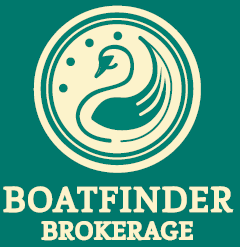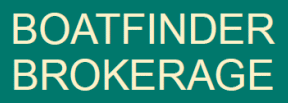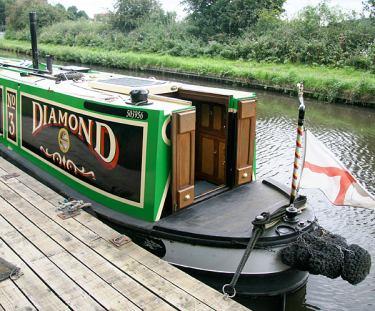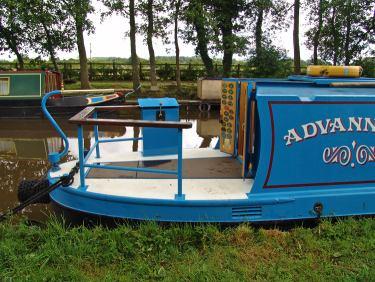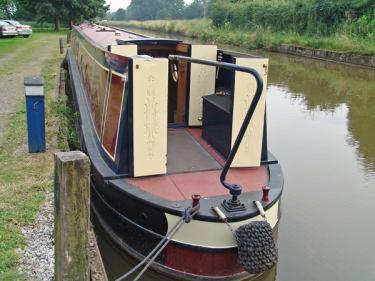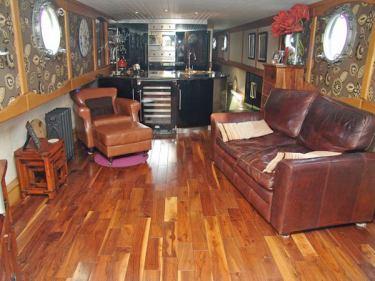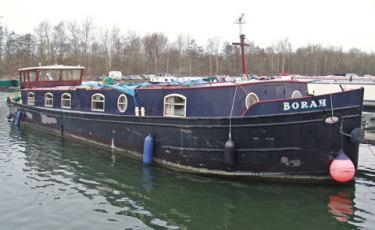As the name suggests, the "Trad Stern" style is based on the look of a traditional working boat and has a small unguarded rear deck or "counter" behind the rear doors.
Advantages of the Trad Stern
The Trad Stern gives the boat a more traditional look and maximises interior space for a given boat length (a useful feature when considering a boat to live on). When cruising the helmsman can stand inside the rear cabin giving some extra protection from the elements.
Disadvantages of the Trad Stern
Less useful outside space, passengers will need to use the 'well deck' in the bow of the boat. It is therefore a less sociable layout when cruising.
The modern trad versus the traditional trad
The Trad Stern style can be further subdivided into "Modern Trad" and "Traditional Trad". In the Modern Trad, the engine is located beneath the floor at the rear of the boat, just inside the rear doors. This leads to reduced head room at the back of the boat. The rear trad area usually has a head room of 5ft 4in as opposed to a typical head room of 6ft 4in in the rest of the boat. The "Traditional Trad" has the engine (usually a vintage or replica vintage engine) situated in a separate engine room forward of the rear cabin. The rear cabin is then usually fitted out in the style of a traditional Boatman's cabin with a stove, lots of useful storage and a Boatman's bed. It is common for the paneling and doors in the Boatman's cabin to be decorated in a traditional style using roses and castles.
